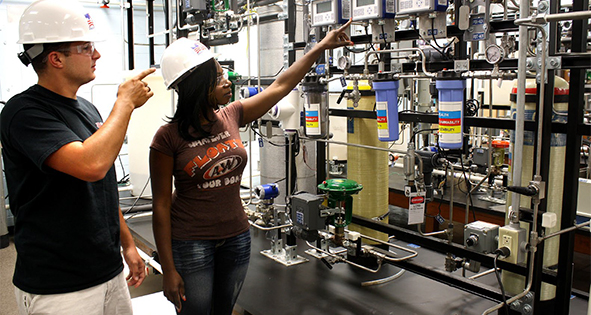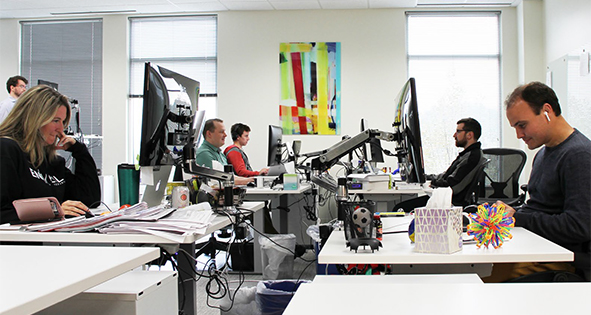
North Dakota: Focusing on Energy and Technology
22 Nov, 2016
By Lori Culpepper
North Dakota was named the “Best Run State” by the website 24/7 Wall Street and ranked No. 3 for “Overall Business Climate” in a 2013 Pollina Report. Manufacturing is a big part of this success and accounts for 10 percent of North Dakota’s Gross Domestic Product.
While much of the U.S. has experienced a manufacturing retraction since 2000, North Dakota has seen expansion. Strong market growth, domestically and internationally, has contributed to this healthy manufacturing economy.
However, manufacturing and technology-based businesses in North Dakota face a serious threat from the pressures of off-shore competition and globalization. To face these threats, North Dakota’s Department of Commerce has concluded that future expansion of the state’s manufacturing sector will not come from labor growth, but from innovation and productivity gains, as well as a strong focus on developing foreign markets.
Energy is an area North Dakota is focusing on for growing the economy. Energy is the state’s third largest industry, and over the past several legislative sessions, Gov. Jack Dalrymple and the legislature have implemented a comprehensive package of state incentives to stimulate growth in all energy sectors and create a broad-based energy strategy to maximize North Dakota’s energy resources.
So far, energy incentives are working, and many new renewable energy projects have been completed, announced or are under construction in the state. Some of the new programs created to enhance energy production include EmPower ND Commission, Renewable Energy Program and the Biomass Incentive and Research Program.
North Dakota’s technology-based business sector is another targeted industry for growth. The state’s IT industry contributes significantly to the state’s overall growth and economic strength since it is connected to virtually every industry across the state. According to the Information Technology Council of North Dakota (ITCND) State of the IT Industry 2015 Guide, more than 3,280 businesses employ 21,760 North Dakotans in various fields including IT, human relations, finance and marketing.
Companies such as Microsoft and Amazon call North Dakota home, as well as other high-demand IT users like Unisys and Cargill Global Business Services.
North Dakota is also a leader in Unmanned Aircraft Systems (UAS). The state is one of six Federal Aviation Administration (FAA) UAS test sites that conducts research to determine how to best integrate UAS into the national airspace. The FAA certified the Northern Plains UAS Test Site as the first site ready for operations in April 2014.
The University of North Dakota (UND) supports a ground-based, ganged phased array radar system capable of sensing manned or unmanned aircraft within North Dakota. UND is also a world leader in aerospace education, UAS operations and safety. The university offers one of the most established UAS undergraduate programs in the nation.
When it comes to transportation systems on the ground, Dalrymple says that North Dakota has made great progress on road and highway improvements and water supply projects. Going forward, he says the state should continue to invest in infrastructure needs.
Bismarck-Mandan
By Rachel Hamilton
Bismarck sits on the Missouri River near the middle of the state; Mandan is its other half, a slightly smaller metro area on the west side of the river.
“In the next 18 to 24 months, we’ll have gigabit [per second] internet service in Bismarck,” says Nathan Schneider, director of business development for the Bismarck-Mandan Development Association. Midco will provide the service.
Being the capitol city, Bismarck is a “large governmental hub,” Schneider says, noting that while the government is a large employer, the area has more opportunities for growth in its healthcare, agriculture and manufacturing sectors.
Bobcat has its North American headquarters for research and development, the Bobcat Acceleration Center, in Bismarck. Agriculture is an even stronger presence.
“According to North Dakota Ag, we lead the country in producing 13 agricultural products,” Schneider says. Many if not most of those products are exported out for final processing, however.
“That is an opportunity if someone wants to figure out how to process at the site of production,” Schneider says, adding that the national trend toward preferring whole and local foods is increasing the demand for production nearer the site.
The Bismarck-Mandan area is also strengthened by its business diversity and quality of life, Schneider says. Even the fluctuations in North Dakota’s oil prices have a minimal effect, as the cities are about 100 miles from the shale plains.
Improvements to local school districts and the area’s reputation for a strong work ethic help solve the workforce shortage faced by the area and most of the upper Midwest.
“We kind of have to focus on the smaller companies; 50 to 100 employees may be more manageable for a company to come in and find,” Schneider says, noting that there are three higher education institutions with “customizable training specifically for businesses.”
Fargo-Moorhead
Fargo and Moorhead are sister cities, lying across the Red River from each other, with Fargo in North Dakota and Moorhead in Minnesota. The area’s unemployment rate is under 2.5 percent, and “a very high percentage of our population is 18 to 30-year-olds,” says James Gartin, president of the Greater Fargo-Moorhead Economic Development Corporation (GFMEDC).
“Everybody should come to Fargo,” says Gartin, noting the town’s high quality of life as well as its welcoming people. The community has been growing rapidly; growth is around eight percent, and “that’s down from double digits the last five years.”
Workforce development is a big part of what the GFMEDC does. “We do a lot of work with education: K-12 and higher education,” Gartin says. North Dakota State University and Minnesota State University Moorhead are two of the larger institutions in the area.
“We’re one of the top [tech scenes] outside of Silicon Valley,” Gartin says of Fargo. “A lot of that has fed off the Microsoft campus. We have the third largest Microsoft campus in the world.”
In the last five years the area has produced approximately ten technology startups that Gartin calls “zero to sixty” companies; they go from one owner with zero employees to around sixty employees very quickly. Several gigabit fiber internet providers compete for area business.
The area is both a healthcare hub with a bioscience cluster and a retail hub with a strong trade presence with Winnipeg via Interstate 29 and the Red River.
Agriculture is the number one sector for the area. While the agricultural manufacturing cluster has been down for the last few years, as Gartin says, some of them are still expanding, including Cargill. “That just tells you the breadth and depth of the marketplace,” says Gartin.
Related Posts
-

Business Starts Here
-

TEXAS ENTERS 2021 AS WORLD’S 9TH LARGEST ECONOMY BY GDP
-

CALIFORNIA: 5TH LARGEST ECONOMY IN THE WORLD
-

MINNESOTA: FIRST IN FIVE-YEAR BUSINESS SURVIVAL RATE
-

CANADA: Alberta. More Open Than Ever
-

KENTUCKY: The Bluegrass State Is The Right Place To Grow Your Business
-

TENNESSEE: Great Brands Deserve the Great State of Tennessee
-

LOUISIANA: Custom Workforce for Expanding
-

MARYLAND: Home of Innovators
-

MAINE: Yankee Ingenuity









